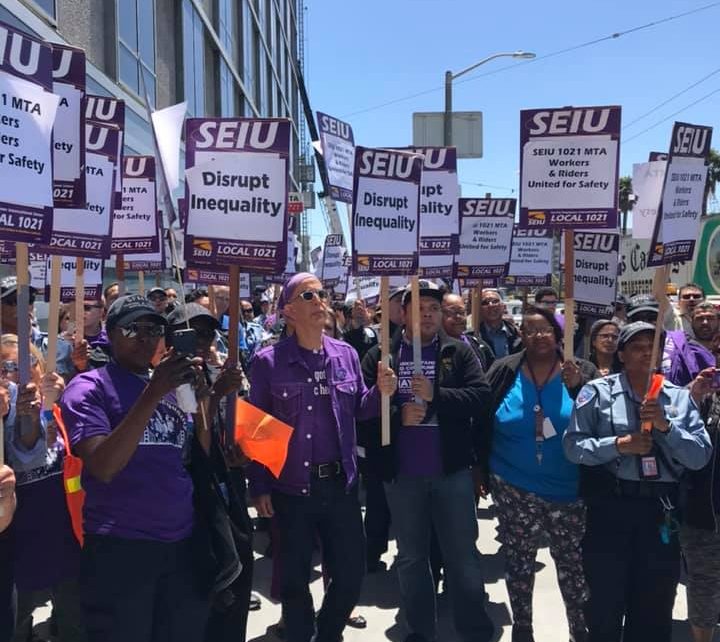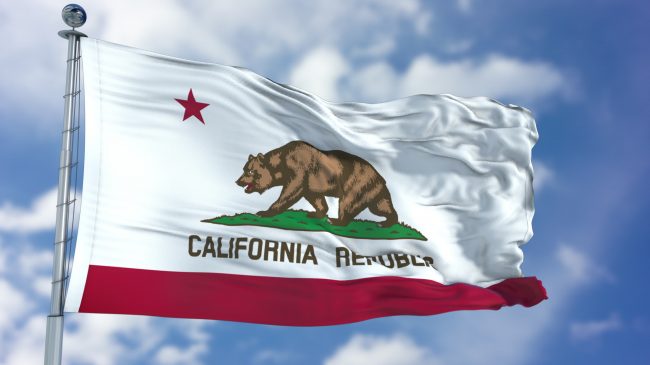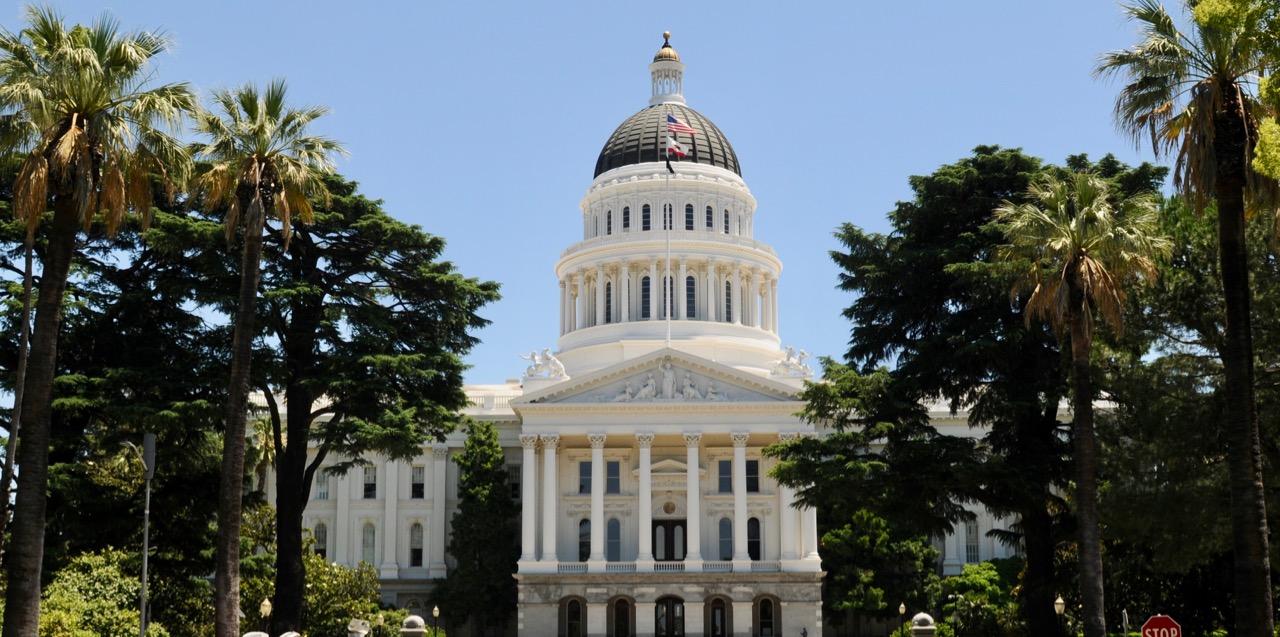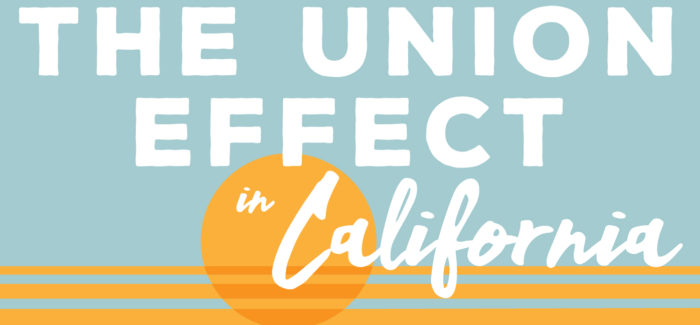
SEIU protest at Capitol (Photo: Facebook)
Winning a War of Attrition Against Government Unions
Government unions are the root cause of bloated, inefficient, even hostile government in California
By Edward Ring, April 21, 2021 2:45 am
Anyone involved in state or local politics in California soon realizes that government unions are the most powerful special interest in the state. From time to time, as the ride-share behemoths proved in spectacular fashion last November with Proposition 22, corporations will defy the unions on very specific issues. But by and large California’s corporations have entered into a profitable symbiosis with government unions.
Small wonder. California’s state and local government unions collect and spend nearly one billion dollars per year, mostly in the form of dues from workers in the state and local government bureaucracies. The teachers’ unions alone, when you include local chapters and bargaining units representing education service workers, have nearly a half-billion dollars to work with. Every year.
There is not one member of California’s state legislature who is not likely to acknowledge, off the record, that government unions in California exercise almost absolute political power. But they have one Achilles heel, California’s initiative process.
Every two years – it used to be every state election including primaries and special elections, but in 2011 the unions got rid of that privilege – California’s voters have the right to directly approve or reject new laws and new constitutional amendments that can supersede legislation passed by the union-controlled state legislature. Not only can laws and constitutional amendments approved via a state ballot initiative overturn existing law, but the state legislature cannot pass contrary legislation to nullify these initiatives. They can only be nullified by a new, contrary initiative being put before voters in a subsequent election cycle.
Putting an initiative on the ballot is no small task. For example, a constitutional amendment, capable of implementing fundamental political changes in California, will not qualify for the state ballot in November 2022 unless proponents gather not quite 1.0 million signatures from registered voters. To ensure that many signed petitions withstand the validation process, since inevitably there are duplicates and ineligible signatures, at least 1.3 million signed petitions have to be gathered. The campaign necessary to collect this many signed petitions can cost proponents anywhere between five and ten million dollars.
This isn’t a lot of money for government unions to spend. It also isn’t a lot of money for a consortium of large corporations to spend. That is evident from the quantity of initiatives that qualify for the state ballot every two years. But it is an absolute pile of money for any group that is willing to defy these unions to spend. It is a nearly prohibitive amount of money, which is why initiatives that pose an existential threat to government unions rarely make it onto the state ballot.
In the first two decades of this century, only a two major threats to government union power via ballot initiatives come to mind. In 2012, Prop. 32 would have banned unions and corporations from contributing payroll-deducted funds to state and local candidates. It would also have banned government contractors from contributing to candidates that may award government contracts. Unions fought this hard, spending $70 million in opposition, vs. $20 million mustered by the proponents. In 2005, Governor Schwarzenegger – who up to that time had been an outspoken critic of government unions – put four initiatives on the state ballot. All of these initiatives challenged union power, and the unions fought back hard, spending well over $200 million to defeat them all, versus $50 million raised by the proponents.
Decouple Qualification Effort from Campaign for Passage
The historical record of ballot initiatives that challenged government unions in California has spawned a conventional wisdom that goes something like this: “The unions are going to grossly outspend us, so we can’t have any hope of victory unless we carefully pick a perfect, winnable initiative, preferably incremental in nature that will overwhelmingly appeal to voters. So let’s save our money and go at the unions once every ten or twenty years, because maybe then we can win a little something. If we try anything bolder than that, nobody will ever donate to conservative causes again in California.”
This logic, while timid, is safe and sound. But there is another way to look at these numbers. And it goes like this: “Unions may have $2.0 billion per year to spend, but they can’t use all of that for politics, and while what they do spend on politics is still insanely abundant, it isn’t limitless. If we know that unions are going to spend $50 million or more to be sure they defeat a ballot initiative that they consider an existential threat, then let’s make sure we have at least one, if not a half-dozen, existential threats qualified for the ballot, every two years from now until hell freezes over.”
Imagine the impact of this strategy. Instead of spending $5 million to qualify an initiative for the ballot and $50 million to try to win passage, drop that campaign for passage to $45 million, and use the $5 million you save to make sure you have another initiative on the ballot in two years.
This strategy can be examined from a lot of angles. Why even worry about the campaign for passage of an initiative? Why not form a committee focused on one thing only; qualifying initiatives for the state ballot every two years, as many as possible, where every one of them is an existential threat to the government unions?
It’s a target rich environment. Education reform, pension reform, work rule reform, collective bargaining reform. Take away their right to strike – they’re public employees that enjoy civil service protection. Or attack the leftist issues that government unions support in lockstep with corrupt corporations, i.e., roll back extreme environmentalist laws that have tied up in knots any attempts to develop land, energy and water in California. No wonder the state is unaffordable. Get rid of union make-work projects such as high-speed rail and direct the money into infrastructure that will actually benefit Californians. Require annual 3rd party audits of government agencies. Reform the government contracting processes.
There’s no end to what sorts of policy initiatives could be introduced to voters that would draw the fire of government unions and deplete their treasuries. Dozens of policy areas, hundreds of detailed proposals, and they could be put forward again and again. How many times can these unions spend $50 million or $100 million to defeat these existential threats?
This is a war of attrition that underfunded insurgent reformers in California can win. The asymmetry between the cost of qualifying a state ballot initiative and the cost to the unions to defeat it will eventually drain them. For every dollar that’s spent by the insurgents, the unions will have to spend five to ten dollars. The more bold and disruptive the initiative is, the more the unions will spend to be certain it fails. And all those hundreds of millions they’ll spend is money they can no longer spend in Georgia, Wisconsin, or anywhere else outside California. It’s also money they’ll be unable to spend to control battleground school boards and city councils across the state.
The spinoffs of this strategy go beyond just breaking these unions financially and reducing their ability to control local and state elections. As outspoken opponents of government unions finally become a significant percentage of local elected officials, because they weren’t spent into the ground by their union supported opponents, a critical mass of young and rising reform-minded politicians emerge in California. Suddenly reformers have experienced candidates available to run for state assembly and state senate.
There’s more. Over time, the power of incumbency, the level campaigning playing field, and a host of enlightened new policies will enable the electorate to understand the value of political reform. Better schools. Better neighborhoods. A lower cost-of-living. Lower crime. Lower taxes and fees. An end to harassment of small businesses. Fewer regulations. More government accountability.
Eventually, to come full circle, unions will be so exhausted fighting initiatives that are mortal threats to their existence that voters will start to approve them, because the unions no longer have the capacity to out-spend the proponents in the general campaign.
Government unions are the root cause of bloated, inefficient, even hostile government in California. Making them fight for their existence via ballot initiatives is a cost-effective way to eventually break their power.
- Ringside: EVs and California’s Future Demand for Electricity - December 4, 2025
- Ringside: Politically Viable Water Supply Projects - November 27, 2025
- Ringside: Shifting Costs Does Not Solve California’s Electricity Shortages - November 20, 2025





Chumps
Reimagine won’t you….reimagine sounds so soothing/uplifting.
You’re in Kmart rags eating week old Wonder bread in a dingy studio next to a very popular off ramp to an extended hours welfare office. Your pension is work till you drop…… along with you rented sledge hammer.
Excellent idea. I’m a Democrat but do not share my party’s worship of public unions. I was involved in local government and saw the damage they do to efficiency and efficacy. Their cost to taxpayers is astronomical, but no one seems to care!
We care. We just have not been able to overcome the skilled union marketing that misrepresents their agenda as programs for the “public good”..
Open borders in fact fills failing teacher union classrooms who need new fresh cohort replacement students every single year to keep the teacher union dues flowing into Democrat causes.
Health care for all is really support for the nurse unions and the medical industrial complex. Free college and cancel student loans is just more public wealth transfer to the instructors unions.
Green New Deal and every other Democrat scam program always now includes the demand all workers belong to a union, a third party private entity (!), which is complicit electing even more Democrat private wealth confiscation agents.
How do we get this counter message out there?
It’s time to start playing chess instead of checkers. I like it!
The initiative process is exactly what we need to do.
In our schools, unions have the power they have because they have our kids locked into a monopoly system and they know it.
The solution is to end that monopoly, stop forcing parents to put their kids in schools that focus on benefiting their employees more than providing the best education for our kids.
School choice is how that can be done. More parents than ever can see that today.
Let’s put an initiative on the ballot and get it done. Stop allowing our kids to be held hostage.
Show your support by signing the petition now! And be sure to sign up for email updates and pass on to anyone you know who might agree.
#schoolchoice
http://fb.cascf.com
Marshall Tuck ran two very close races for State Superintendent of Schools only to be defeated after a “long count” and highly organized opposition by the teachers unions.
Marshall Tuck offered the programs, state wide endorsements, forward looking personality and proven track record. Voters need to take another look at Tuck’s two nearly successful campaigns to rescue our failing K-12 school system and learn where just a little additional effort could make that type of education reform campaign successful next time.
The “pandemic” removed any illusion the state teachers unions are any friends of education. That is now a tipping point that will move this in a far better direction. The #45 ranking of our once proud K-12 system shocks the conscience. None of us can ignore this any longer. Reform is now mandatory; not optional.
Time to also revisit the last recall when Arnold Schwarzenegger promised to “blow up the little boxes of special interests” in Sacramento. However, his four promised reform initiatives put before the voters all went down to defeat primarily due to awakening the public sector unions.
A good journalism project would be to review those four reform propositions and had they passed, what would the state look like today. One was elimination of teacher tenure, which nearly passed but ultimately did not survive the “long count”.. Can’t remember the others. Were there hidden thumbs on our “long vote counts” at the time? We can now never know.
No comment on Schwarzenegger’s later capitulation of the public sector unions after 2000 which ultimately sent the entire state into its precipitous downfall. he ultimately was the worst thing to happen to this state – even though he road into office after a popular recall.
If only this were possible…
Get an instant $1000 raise by dumping your no longer mandated public employee union membership. Opt-Out-Today. See Freedom Foundation website and do this online …today.
Next: remove every single teacher union-backed candidate on your local school boards. They have failed us miserably. Don’t wait for term limits – get them out of office now.
Obama was the unions worst enemy. If you want to fight unions bring him back. Oh wait, he is back.